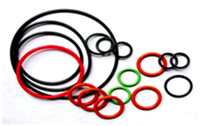Guangdong Yuanlin New Materials Co., Ltd
Contact person: Mr. Gu
Mobile phone:13826960299
Contact person: Li Yongfeng
Mobile phone:18128036097
Telephone:0769-88319157
Fax:0769-88319159
E-mail:gogothomas421@gmail.com
Address:No. 10, Shangye Road, Changping Village, Daojiao Town, Dongguan City
Kaolin is a non-metallic mineral, which is a kind of clay and clay rock mainly composed of Kaolinite group clay minerals. It is named after Gaoling Village in Jingdezhen, Jiangxi Province. The pure kaolin is white, delicate and Mollisol like, with good plasticity, fire resistance and other physical and chemical properties. Its mineral composition is mainly composed of Kaolinite, halloysite, hydromica, Illite, Montmorillonite, quartz, feldspar and other minerals. Kaolin is widely used in papermaking, ceramics, and refractory materials, followed by coatings, rubber fillers, enamel glazes, and white cement raw materials. A small amount is used in plastic, paint, pigments, grinding wheels, pencils, daily cosmetics, soap, pesticides, pharmaceuticals, textiles, petroleum, chemical, building materials, national defense, and other industrial sectors.
Physical and chemical properties of kaolin: it is mostly matte, with a pure and delicate appearance. If it contains impurities, it can have colors such as gray, yellow, and brown. The appearance can appear as loose soil blocks or dense rock blocks depending on the origin. Density 2.54-2.60 g/cm3. The melting point is about 1785 ℃. It has plasticity, and wet soil can be molded into various shapes without breaking, and can remain unchanged for a long time.
The genetic types of kaolin Ore genesis are based on the genesis of kaolin deposits. According to the differences in metallogenic geology, geographical conditions, deposit size, ore body morphology and occurrence characteristics, ore material composition, etc. reflected by different mineralization, the "Geological Exploration Specifications for Kaolin Mines" divides China's kaolin deposits into three types and six subtypes.
1. Weathering type: also divided into weathering residual subtype and weathering leaching subtype;
2. Hydrothermal alteration type: further divided into hydrothermal alteration subtypes and modern hydrothermal alteration subtypes;
3. Sedimentary type: it can be divided into sedimentary and sedimentary weathering subtypes and Kaolinite clay rock subtypes in coal bearing strata.
The industrial types of kaolin ores are divided into three types based on their texture, plasticity, and mass fraction of sand:
1. Hard kaolin: It is hard and has no plasticity, but has plasticity after being crushed and finely ground.
2. Soft kaolin: It is soft and has strong plasticity, with a sand mass fraction of<50%;
3. Sandy kaolin: It is soft and has weak plasticity, with a sand mass fraction of>50%.
The flame retardancy of kaolin refers to its ability to resist high temperatures without melting. The temperature at which it softens and gradually melts during outdoor work is called fire resistance. It can be measured immediately using a standardized temperature measuring cone or a high-temperature microscope, or it can be calculated using the M.A. Bezbeldorf empirical formula law. Fire resistance t (℃)=[360 Al2O3-R2O]/0.228. In the formula, Al2O3 is the mass percentage of Al2O3 when the sum of the three analysis results of SiO2 and Al2O is 100; R2O is the mass percentage of other metal oxides when the sum of the analysis results of SiO2 and Al2O is 100. According to this calculation formula, the deviation of fire resistance is within 50 ℃.
The refractoriness is related to the organic chemical composition of kaolin. The refractoriness of pure kaolin is generally around 1700 ℃. When the content of water Biotite and marble is high, and the content of potassium, sodium and iron is high, the refractoriness is reduced, and the refractoriness of kaolin is at least 1500 ℃. The industrial department requires that the R2O content of refractory insulation materials be less than 1.5-2%, and the Fe2O3 content be less than 3%.
